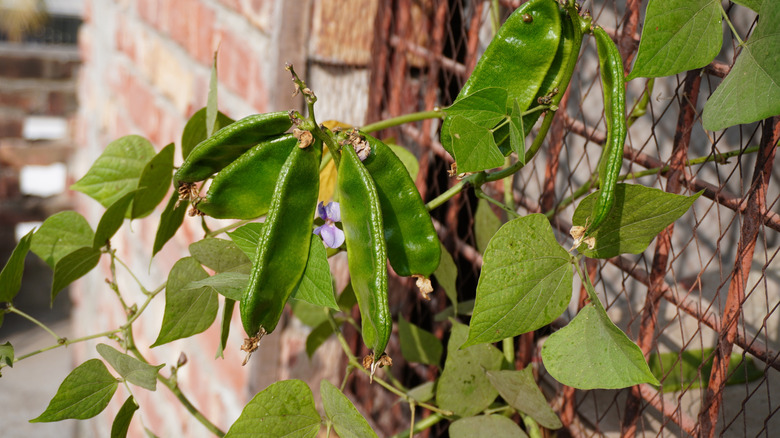Avoid Planting Lima Beans Near These Plants For Better Growth
For many plants, alliums (of the herb or flower variety) can be great companions. They can deter pests like aphids and deter voles from eating your bulbs, making them great companion plants for roses. Still, what's good for one plant isn't always what's best for another. For instance, alliums can sometimes hinder root growth, especially in legumes. So, if you're in USDA Hardiness Zones 7a through 11b and planning on growing lima beans (Phaseolus lunatus L.), or any bean, this summer, be sure to keep them far away from your garlic, onions, scallions, leeks, or any other alliums.
There are two main reasons why alliums and lima beans don't make good neighbors in a garden. For starters, while Sulphur can be an important part of plant growth, alliums secrete a sulphur-based compound that actually inhibits root-growth in beans. Legumes like lima beans also need nitrogen-fixing bacteria in order to absorb necessary nitrogen. However, nearby alliums can disrupt this bacteria. Ultimately, if you plant your lima beans too close to alliums, it can result in less vigorous growth and smaller yields.
Better companion plants for lima beans
If you want to maximize your lima bean harvest, you should consider pairing it with other, more beneficial, plants. Beans can make great neighbors by absorbing and placing nitrogen back into the soil for nearby companions. Because nitrogen promotes foliage growth, planting herbs like basil can be beneficial for both plants. The beans will help the basil produce more leaves, while the basil helps deter whiteflies, mosquitoes, and other pests.
Other legumes, like peas, share similar growing habits to lima beans. Peas also happen to attract beneficial insects like ladybugs. Some fragrant varieties are also thought to repel pests. Similarly, borage (Borago officinalis), an edible flower that makes a great addition to most vegetable gardens, can attract pollinators and deter pests that snack on legumes.
Anytime you're growing beans you should consider using the three sisters method of growing. Long before Europeans came to North America, indigenous people were planting beans, corn, and squash together because these three species work well together. Corn provides a stalk for lima beans to climb while squash leaves shade the ground and protect moisture and beans add nitrogen to the soil. This method keeps everyone happy and could add wonders to your garden.

